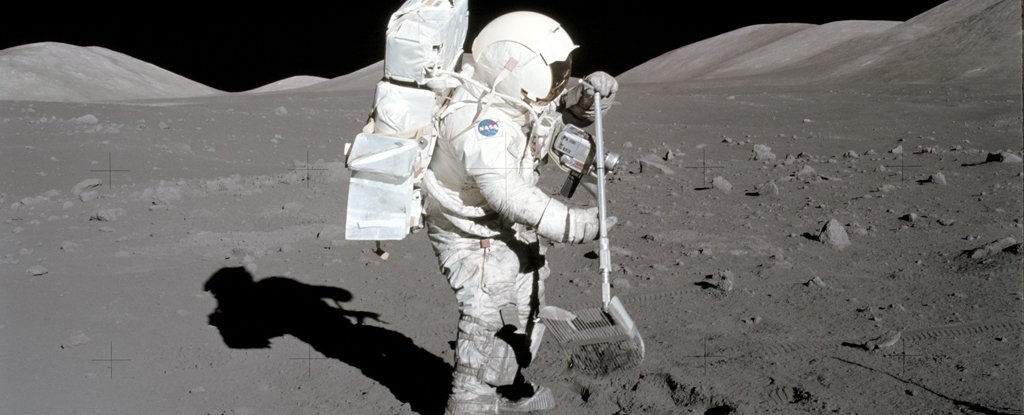
As per the recommendations from the US National Academies of Sciences, Engineering, and Medicine, men are advised to consume 3.7 liters of water daily, while women should aim for 2.7 liters.
Now envision a crew of three embarking on a 3-week journey to the Moon, necessitating around 189 liters of water, equivalent to approximately 189 kilograms!
Considering the need to transport all the water without the option of recycling, longer space expeditions with larger crews pose considerable logistical challenges, primarily related to water carriage.
Scientists from the US Naval Research Laboratory (NRL) have identified lunar rocks containing hydrogen. When paired with lunar oxygen, these findings suggest a potential supply for future lunar explorers.
The Apollo program brought back a total of 382 kilograms of lunar rocks. To put this into perspective, that’s nearly five times my weight of 80kg – and rest assured, it’s all muscle!
While some of the samples underwent immediate analysis, others were securely sealed for future research. The hope is that advanced instrumentation in the future will offer heightened sensitivity for further insights.
The NRL research team, spearheaded by Katherine D. Burgess along with team members Brittany A. Cymes and Rhonda M. Stroud, has recently unveiled their discoveries from the analysis of lunar rocks.
Their primary goal was to unravel the origin of water on the Moon and gain insights into its formation. The implications of their findings hold significance for future lunar exploration, particularly for the establishment of permanent lunar bases, which will heavily depend on utilizing the available lunar resources.
The research articulates “Effective use of the resource depends on developing an understanding of where and how within the regolith the water is formed and retained”.
The research employed transmission electron microscopy to investigate lunar sample 79221. This technique utilizes a beam of electrons to visualize specimens and generate highly magnified images.
Specifically, the team focused on grains of the minerals apatite and merrillite, uncovering signs of ‘space’ weathering induced by the solar wind. The solar wind, a rapid stream of charged particles emanating from the Sun at speeds of up to 1.6 million km per hour, played a role in this weathering process!
Hydrogen signatures were identified in samples within vesicles, small cavities formed after lava solidification. This discovery affirms that detectable quantities of solar wind, including hydrogen, are being trapped, potentially forming a valuable reservoir for future lunar exploration.
The significance of hydrogen as a versatile resource suggests that mining it from lunar surface material could greatly benefit various aspects of exploration.
The groundbreaking aspect of this discovery lies in the potential resolution of the mystery surrounding the origin of lunar water. The findings strongly suggest that chemical interactions between the solar wind and lunar rocks are likely responsible.
If we can unravel the origins of lunar water, a prospect that seems closer now, we gain the capability to utilize it effectively, enabling further exploration into the Solar System.
This article was originally published by Universe Today.





